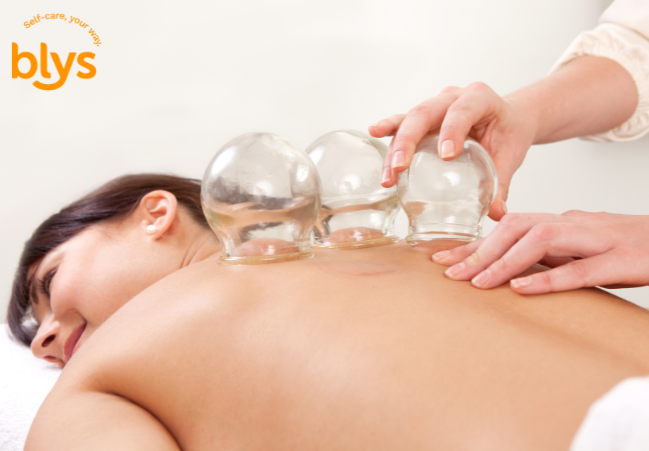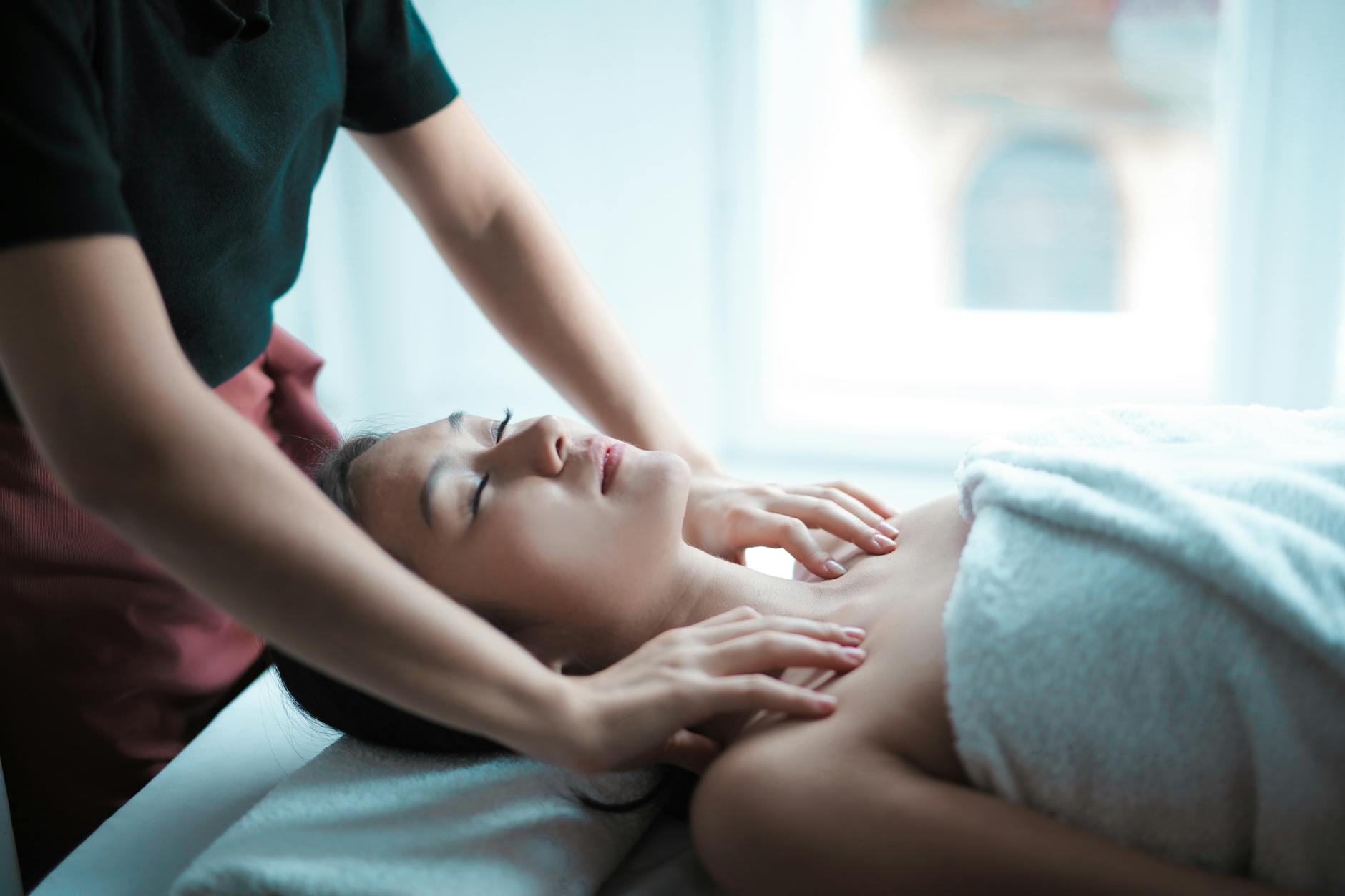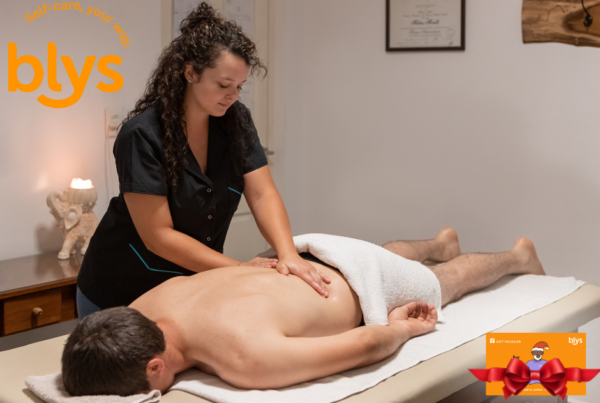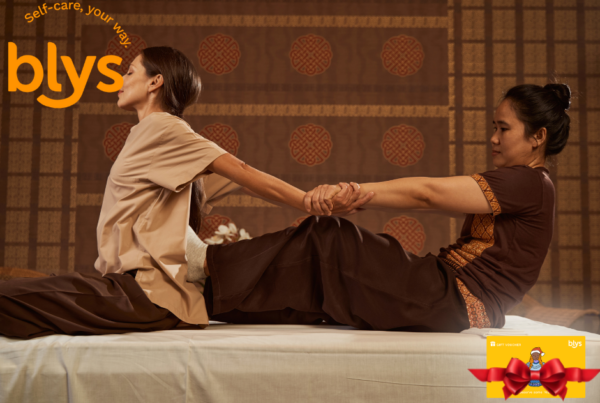
Cupping therapy has been gaining traction across UK and for good reason. This ancient healing technique involves placing suction cups on the skin to help increase blood flow, reduce muscle tension, and support recovery. It’s often used by athletes, busy professionals, and anyone looking to relieve aches and feel more balanced.
At Blys, cupping is offered as part of our mobile massage services, meaning you can enjoy the benefits of this powerful therapy in the comfort of your own home. It’s completely safe when performed by a trained professional, and your session can be tailored to your needs whether you’re managing chronic pain, dealing with everyday stress, or just curious about how it feels.
If you’re a first-timer, there’s no need to worry. Our guide will walk you through what to expect before, during, and after your session, so you can book with confidence.
What Is Cupping Therapy and How Does It Work?
Cupping therapy is a time-tested practice that uses suction to help reduce muscle tension, improve circulation, and support your body’s natural healing response. The technique involves placing specialised cups typically made of silicone, glass, or plastic on the skin to create negative pressure.
This gentle pulling effect lifts the soft tissue, encourages fresh blood flow to the area, and can provide noticeable relief from aches, stiffness, and fatigue. Once considered alternative, cupping is now widely embraced in sports recovery, wellness clinics, and mobile massage services like Blys.
The principle behind cupping
Cupping is designed to stimulate blood and lymphatic flow while easing physical tension. The suction helps draw stagnant fluids and metabolic waste out of deeper tissue layers and towards the skin, where your body can naturally process and remove them.
This process is thought to improve energy flow, reduce stress, and promote better recovery.
Types of cupping therapy
There are two primary forms: wet and dry. Wet cupping involves tiny cuts to draw out blood and is typically done in clinical or traditional settings. Dry cupping the type offered by Blys is completely non-invasive and uses only suction.
It’s a gentle, effective option for those new to cupping or looking for regular, in-home sessions.
The application process
Your therapist will apply oil to the skin before placing the cups. Depending on your needs, the cups may be left in place for several minutes (static cupping) or moved slowly across the surface (gliding cupping).
Blys therapists tailor each session to ensure comfort and effectiveness.
What it feels like
Most people describe the sensation as a firm pulling or tight pressure that softens over time. It’s not painful, though temporary round marks may appear afterwards.
What the research says
Research continues to explore the benefits of cupping therapy, particularly for managing pain and improving mobility. Here’s a summary of what current studies reveal:
- One study found that dry cupping significantly reduced chronic pain and improved mobility, especially for neck and back issues.
- A 2024 systematic review and meta-analysis in Complementary Therapies in Medicine reviewing randomized controlled trials for low back pain concluded that cupping therapy produced a statistically significant pain reduction compared to control treatments (p = 0.0009).
- A recent BMJ Open meta-analysis of chronic musculoskeletal pain showed that cupping offers immediate pain relief, with a standardised mean difference of –1.17 (95% CI: –1.93 to –0.42; p = 0.002), highlighting its effectiveness as a short-term intervention.
Whether you’re new to cupping or revisiting it as part of your wellness routine, understanding these research findings and learning what happens during cupping—can help you feel more confident and comfortable going into your first session.
Before Your Appointment: How to Prepare
Preparing for your first cupping therapy session is simple, but a bit of planning can help you feel more relaxed and ready to enjoy the full benefits of the treatment. Since Blys offers mobile massage and cupping services, your session will take place in the comfort of your own home which makes it even more important to set up your space and body for the best possible experience.
Wear something loose and comfortable.
Choose clothing that allows easy access to areas like your back, shoulders, or legs where cups are commonly placed. A robe, singlet, or loose T-shirt is ideal. You may be asked to expose the treatment area, so wearing something easy to slip off or adjust helps maintain your comfort and privacy throughout the session.
Communicate openly with your therapist.
When your Blys practitioner arrives, they’ll take a few minutes to learn more about your needs. Be sure to mention any existing pain points, health conditions (such as pregnancy, high blood pressure, or skin conditions), or sensitivities. This allows them to customise the treatment safely and effectively.
Stay hydrated and eat light.
Aim to drink water before and after your session to support circulation and post-treatment recovery. Avoid eating a heavy meal right before the appointment, as lying flat with a full stomach can be uncomfortable during the session.
All Blys therapists are fully qualified, insured, and experienced in delivering safe and effective cupping treatments so you can feel confident that you’re in capable hands.
Taking a few moments to prepare can make a big difference in how you feel during and after your cupping therapy.
Initial Consultation: Tailoring the Session to You
Every Blys cupping therapy session begins with a one-on-one consultation. This part of the appointment might only take a few minutes, but it plays a crucial role in making sure your session is both safe and fully personalised. It also gives you a chance to understand what to expect, ask questions, and feel completely at ease before the cups are applied.
Your therapist will start by asking about your lifestyle and daily habits. They may want to know how physically active you are, what your work environment is like, and whether you sit or stand for long periods.
This helps identify postural patterns or repetitive stress that may be affecting your muscles. They might also ask about your general stress levels, sleep quality, and hydration since these factors can all influence muscle tension and circulation.
You’ll then be asked to describe any pain points or areas of discomfort. Whether it’s stiffness in your shoulders, tightness in your lower back, or general soreness from exercise, sharing these details helps the therapist decide where and how to apply the cups. They’ll also want to know how long the issue has been going on, whether anything makes it worse, and if you’ve had other treatments that helped.
Your goals for the session are just as important. Whether you’re seeking pain relief, stress reduction, or muscle recovery, your therapist will adapt the session accordingly—adjusting suction strength, cup placement, and whether static or gliding techniques are used.
Be sure to mention any medical conditions or recent procedures. This includes pregnancy, high blood pressure, skin sensitivity, injuries, surgeries, or cosmetic treatments in areas you want treated.
Once everything has been discussed, your therapist will walk you through the session plan and explain what to expect. You’ll have time to ask questions and make sure everything feels right before the session begins.
Learn more about the service and what’s included by visiting our Cupping Massage page.
What Happens During a Cupping Therapy Session?
If you’re wondering what happens during cupping, you’re not alone. First-timers often have questions about the process, and knowing what to expect can make the experience far more comfortable.
A typical Blys cupping therapy session is straightforward, relaxing, and personalised to your needs delivered right in the comfort of your home.
Here’s a step-by-step breakdown of what usually happens during your session:
| Step | What to Expect |
| Arrival and setup | Your Blys therapist arrives with a professional massage table, clean towels, oils, and sterilised cups. They’ll set up in a quiet, comfortable space in your home. |
| Consultation recap | They’ll briefly review what was discussed during your initial consultation, confirm treatment goals, and ensure you’re ready to begin. |
| Cup placement | Cups are placed on specific areas based on your needs. Blys therapists use dry cupping only either static (cups stay in one spot) or gliding (cups move gently across oiled skin). |
| Duration | Each area is typically treated for around 5 to 15 minutes, depending on the tension level and your comfort. Most full sessions last between 45–60 minutes. |
| Sensations | You’ll likely feel a warm, pulling sensation as the suction lifts the skin. Some describe it as tight or intense, but it’s rarely painful. Most people find it deeply relaxing. |
The therapist may combine cupping with remedial massage techniques for even better results. You’re encouraged to communicate throughout the session if you feel any discomfort or need adjustments.
By understanding what happens during cupping, you’ll feel more confident and in control ready to enjoy the full benefits of this ancient yet effective practice.
Does Cupping Hurt? Sensations to Expect
If you’re new to cupping, it’s completely natural to wonder if the treatment will hurt. The short answer is: not usually. While the experience can feel unusual at first, most people find it surprisingly relaxing and even enjoyable once they settle into the session.
During treatment, the suction created by the cups produces a gentle pulling sensation on the skin and underlying muscles. For many, this feels like a firm but soothing pressure comparable to deep tissue massage, but instead of pushing down, the pressure is directed upward. This lifting effect helps release tightness without causing pain.
Here’s what most first-time clients experience:
- Mild tightness or pressure: A pulling feeling that eases after a few seconds as the body adjusts to the suction.
- Warmth in the area: Increased blood flow can bring a subtle heating effect to the skin, often described as comforting.
The intensity of the suction can be adjusted based on your preference. Blys therapists are trained to start with a lighter application and increase pressure only if you’re comfortable. You’re always encouraged to speak up if something doesn’t feel right.
One aspect that often surprises people is the appearance of temporary circular marks where the cups were placed. These marks are not bruises. They are caused by blood being drawn to the surface and indicate increased circulation in the area. Their colour can range from light pink to dark red, depending on muscle tightness and stagnation beneath the skin.
- Lighter marks: may fade within 2–3 days.
- Darker marks: typically fade in 7–10 days and are more common in tense or inflamed areas.
These marks are completely normal and don’t cause any pain after the session.
In most cases, any discomfort is mild and short-lived especially when compared to the long-lasting relief many people feel afterward.
Want to know more about those round marks left after cupping? Check out our guide on what cupping marks really mean for your body and how they reflect your healing process.
Post-Session Care: What to Do After Cupping
After your cupping therapy session, it’s normal to feel deeply relaxed but your body is still working behind the scenes to process the effects of the treatment. Cupping helps stimulate circulation and lymphatic flow, so proper aftercare is key to supporting recovery and maximising results.
To help your body adjust, here’s what you should focus on post-treatment:
Rest and stay hydrated
Give your body time to absorb the benefits of the session by avoiding intense physical activity for at least 4-6 hours. While light walking or stretching is fine, heavy lifting, intense workouts, or anything that puts strain on the treated areas should be avoided.
Drink plenty of water throughout the day to help flush out toxins released during the session and keep your body hydrated.
Be kind to your skin
After cupping, your skin may feel sensitive, especially where the cups were applied. Avoid exposing the area to extreme heat or cold, such as hot baths, saunas, or ice packs, for the next 24 hours. Let your skin breathe skip heavy lotions or synthetic fabrics directly over the marks.
Understand the marks
The circular marks left behind are completely normal and are a sign that circulation has increased. These marks are not bruises and typically fade within 3 to 10 days. Darker marks tend to occur in areas with more tension or stagnation, and they gradually lighten as the body heals.
Support your recovery naturally
Consider eating magnesium-rich foods like leafy greens, avocados, and nuts to help your muscles recover. Gentle stretching, a warm shower, or even a short walk can help keep your body mobile without overexertion.
If you’re dealing with ongoing pain or muscular tension, you may benefit from combining cupping with massage therapy. Learn more about how it can help in our guide to Remedial Massage for Chronic Pain.
By following these simple aftercare tips, you’ll give your body the best chance to feel refreshed, restored, and ready for whatever comes next.
When to Avoid or Modify Cupping Therapy
While cupping therapy is safe and beneficial for many people, there are certain situations where it may need to be avoided or adjusted. Your health and safety always come first, which is why it’s important to be aware of conditions that might affect whether cupping is right for you.
Cupping may not be suitable if you have:
- Open wounds or skin infections: Applying suction over broken or inflamed skin can increase irritation or risk of infection.
- Blood clotting disorders or use of blood thinners: These conditions can increase the risk of bruising or bleeding, even with dry cupping.
Other cases where extra caution is needed include pregnancy (especially in the first trimester), recent surgeries, varicose veins, or known sensitivities to pressure or suction. If you’re unsure whether cupping is appropriate for your condition, it’s always best to consult your GP or healthcare provider before booking a session.
That said, cupping therapy can often be safely modified to accommodate many health needs. All Blys therapists are qualified and experienced in tailoring their approach based on your specific situation. They can adjust cup placement, reduce suction intensity, and avoid certain areas altogether if needed.
During your initial consultation, be open about your medical history, recent procedures, or any physical concerns. Your therapist will use this information to adapt the session accordingly ensuring the treatment is both safe and effective for you.
Your Body, Your Healing With Blys
Cupping therapy is more than just a trend it’s a time-tested, personalised approach to wellness that can support your body’s recovery, release deep tension, and help you feel more in tune with yourself. Whether you’re dealing with everyday stress, muscle fatigue, or simply looking for a new way to recharge, cupping offers a gentle yet effective solution.
The beauty of cupping is that no two sessions are exactly the same. Each one is shaped around your individual needs, preferences, and goals. The experience is relaxing, non-invasive, and tailored to support your healing both physically and mentally.
If you’ve never tried cupping before, giving it a go just once can offer valuable insights into how your body holds stress, where tension builds up, and how natural therapies can make a difference.
Ready to see what it’s all about? Experience the benefits for yourself—book your mobile cupping therapy with a qualified Blys therapist today.





